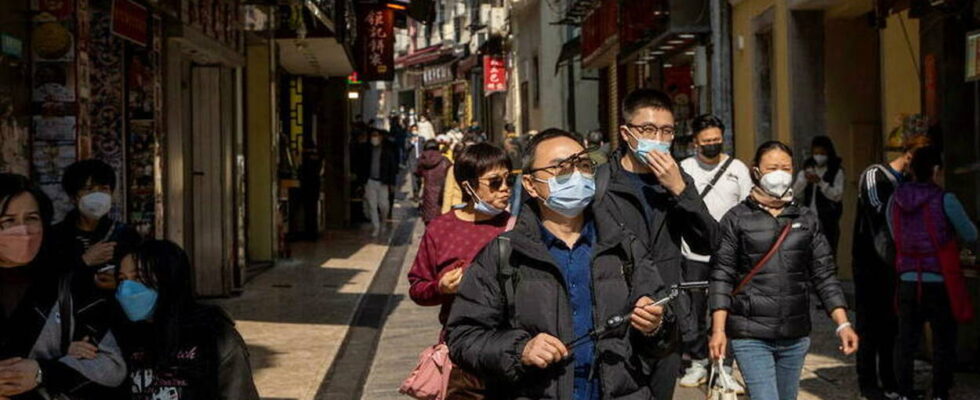For the past ten years, China has been committed to a proactive policy of reducing its polluting emissions into the atmosphere.
By Jean-Francois Bouvet
© VERNON YUEN / NurPhoto / NurPhoto via AFP
Published on
Subscriber-only audio playback
TTaiwan, Hong Kong, Uighurs, facial recognition, social credit, Covid-19… Without even having to mention the invasive spider web of the Silk Roads or Chinese reluctance to clearly condemn Russian aggression in Ukraine , the objective reasons for yielding to the China bashing do not miss. Paradoxically, it is an American institution, NASA, which provides us with one of the rare occasions to speak positively of the Middle Kingdom: the space agency records the clear progress made by China in terms of pollution reduction atmospheric. “Over the past decade, China’s once pollution-choked skies have steadily improved, according to more than two decades of atmospheric measurements from NASA satellites,” reads the journal’s news. Nature published on 1er may.
The article is based on the work of the Atmospheric Composition Analysis Group at Washington University in St. Louis, Missouri, which monitors various pollutants and assesses their impact on global health. These scientists are particularly interested in PM2.5 – fine particles with a diameter of 2.5 micrometers or less – which are among the air pollutants of most concern. They penetrate deep into the respiratory tract as far as the alveoli of the lungs, can pass into the bloodstream and cause cardiovascular and neurological disorders.
An effective prevention plan
In 2013, China published its plan for the prevention and control of air pollution, which tightens the standards for emissions into the atmosphere. The effect of these measures, which resulted in the modernization of coal-fired power stations and the closure of the most polluting industrial units, was spectacular. Levels of PM2.5 in the air have steadily declined, from an average annual exposure of around 55 micrograms per cubic meter (μg/m 3 ) in 2013 to 30.6 in 2022. A figure lower than the national air quality standard set at 35, but still much higher than the maximum level of 5 recommended by the World Health Organization (WHO).
READ ALSOAir pollution: the hidden health crisisChina still has a long way to go, relying in particular on reducing domestic emissions and those linked to automobile traffic. By 2025, the country has set itself the goal of eliminating the strong pollution peaks that Chinese megalopolises are used to.
An article from Lancet published in May 2022 estimates the number of deaths worldwide attributable to pollution, atmospheric or otherwise, at nine million a year. For the authors of the study, “it is increasingly clear that pollution is a global threat and that its drivers, its dispersion and its effects on health transcend local borders and require a global response”.
India and Pakistan, the bad students
India and China, the most populous countries in the world, alone represent more than a third of its eight billion inhabitants: they appear to be major contributors to planetary pollution. “When I look at myself, I feel sorry; when I compare myself, I console myself,” Talleyrand is told. With respective figures of 53.3 and 70.9 μg/m 3 of average annual exposure to PM2.5 according to the IQAIR site, the two countries bordering China, India and Pakistan, are much worse in matter of air pollution. All the more reason to salute the efforts undertaken by the Middle Kingdom to reduce its pollutant emissions. Especially since, these days, opportunities to speak well of China are as rare as the appearance of a smile on Xi Jinping’s face.
